Chapter 60. Language Development in Infancy
Learning Objectives

Describe the sequence of language development from birth to age 2 years.
Review
Review
Select the NEXT button to continue with the Review.
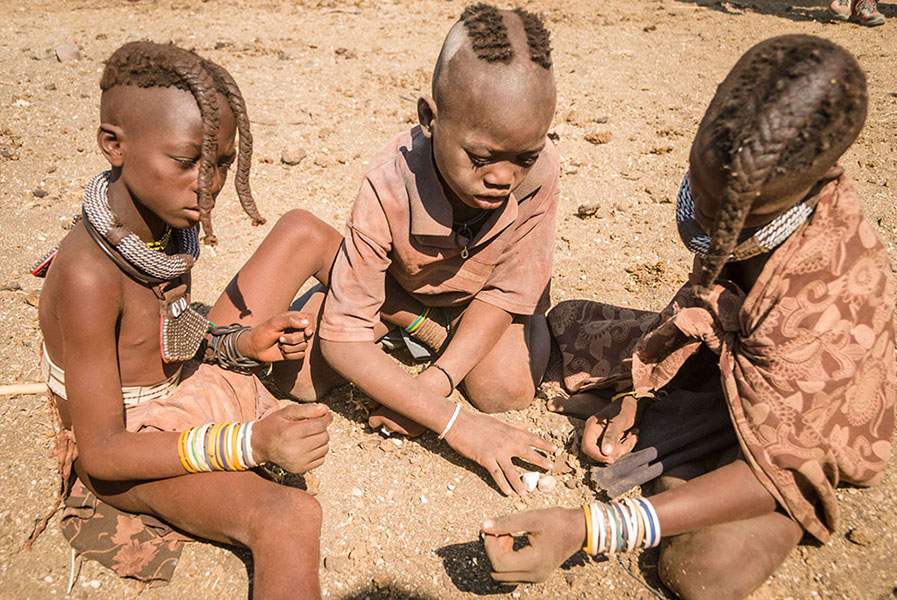
1. Children all around the world acquire their native language within the first few years after birth, and all children follow the same sequence of early language development—although the timing may vary a bit from child to child.
Review
Review
Select the NEXT button to continue with the Review.
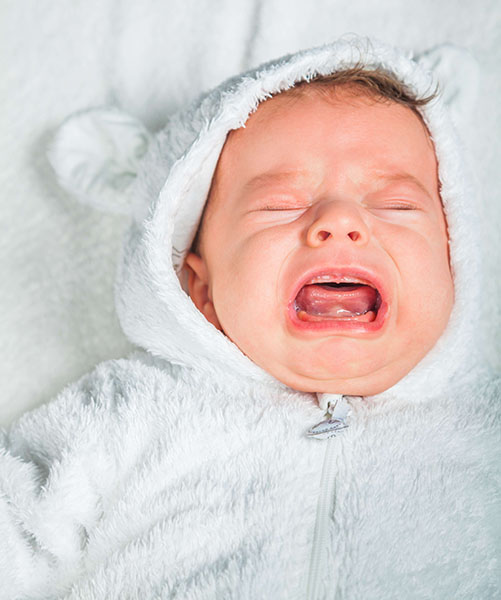
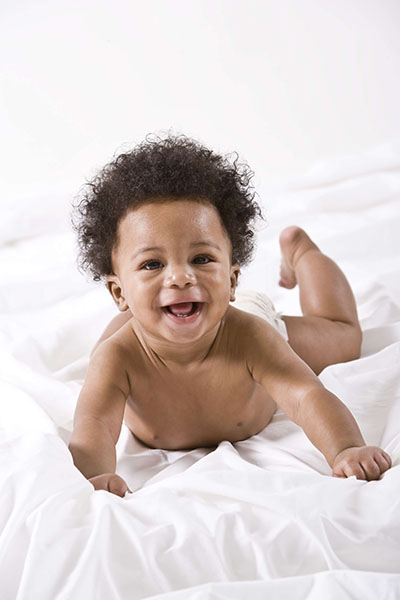
2. In the first few weeks after birth, babies communicate mainly through crying and whimpering. They begin to make more pleasant vowel sounds (called cooing) at about 2 months of age.
Review
Review
Select the NEXT button to continue with the Review.

3. Between 4 and 6 months, infants begin to babble—forming consonant-vowel clusters such as "ba-ba-ba" and "dee-dee," and making a wide range of sounds found in languages from all across the world.
Review
Review
Select the NEXT button to continue with the Review.

4. Around 8 to 10 months, echoic babbling develops as infants begin to imitate the speech sounds found in their household language. Babies who have a hearing impairment don’t move into this stage.
Review
Review
Select the NEXT button to continue with the Review.

5. Around 12 months, most infants can speak in single words (the one-word stage). Shortly before the second birthday, toddlers move into the two-word stage, using telegraphic speech that includes only the most important words.
Review
Review
Select the NEXT button to continue with the Review.
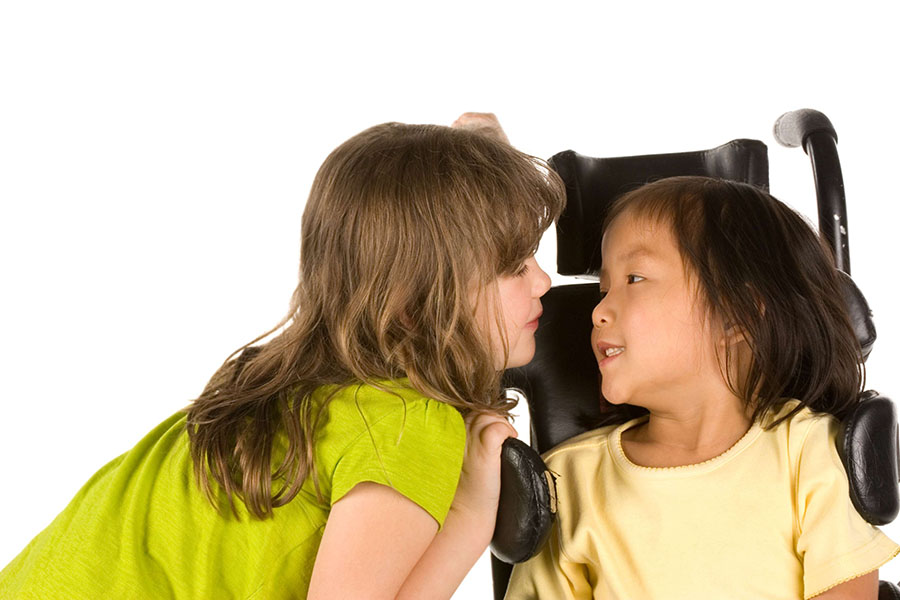
6. A few months later, between 2 and 3 years of age, the multi-word stage marks the beginning of speaking in full sentences. At every stage of development, children (including those with hearing impairments) understand much more than they are capable of expressing.
Review
Review
Select the NEXT button to continue with the Review.

7. The sequence of language development occurs in the same stages and at roughly the same ages all around the world. This suggests that the biological maturation of the brain drives the process of language acquisition—but the process won't happen unless the child is exposed to spoken language.
Practice 1: Listening to Children Developing Language
Practice 1: Listening to Children Developing Language
Roll over each photo to see the stage of language development for a child of that age. Then select the photo to listen to a sample of the vocalizations typical for that age.
newborn
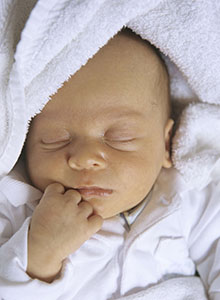
3 months
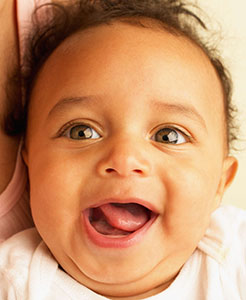
6 months
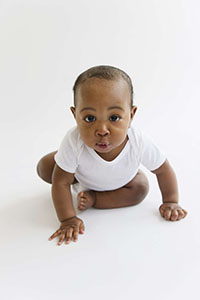
9 months
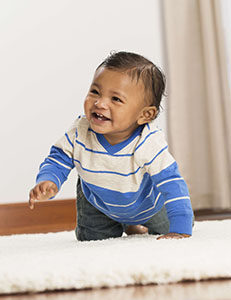
12 months
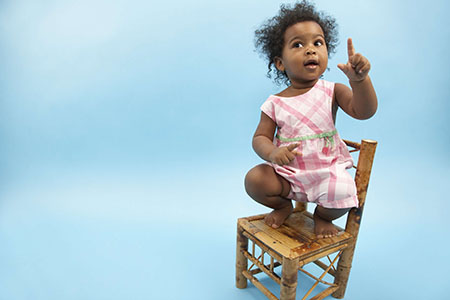
20 months
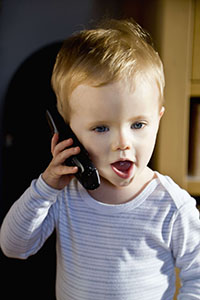
24+ months

crying stage
cooing stage
babbling stage
echoic babbling stage
one-word stage
two-word stage
multi-word stage
Practice 2: Interaction of Heredity and Environment
Practice 2: Interaction of Heredity and Environment
Select the PLAY button to see how genes interact with the language environment of the child.








Practice 3: Stages of Language Development
Practice 3: Stages of Language Development
Select each language stage to see a description of that stage. Then play the video example of that stage.
From birth to about 2 months, babies communicate mainly through crying.
Beginning at about 2 months, babies make softer vowel sounds such as “oooh” and “aaah.”
Beginning at about 4 months, babies spontaneously babble consonant-vowel clusters, including sounds not found in the parents’ language.
At around 8 or 10 months, babies begin to babble sounds that echo or imitate the sounds in the parents’ language, and other sounds disappear.
By 12 months, most infants can speak actual words, which can communicate a sentence of meaning.
Between 18 and 24 months, toddlers can form two-word sentences (called “telegraphic speech”) that have a sensible word order.
From about 24 months on, a child’s spoken language develops rapidly into complete sentences.
Quiz 1
Quiz 1
Drag each of these language stages to the gray area next to the approximate age. When all the stages has been placed, select the CHECK ANSWER button.
Quiz 2
Quiz 2
Match the language stages to their descriptions by dragging each colored circle to the appropriate gray circle. When all the circles have been placed, select the CHECK ANSWER button.
Conclusion
